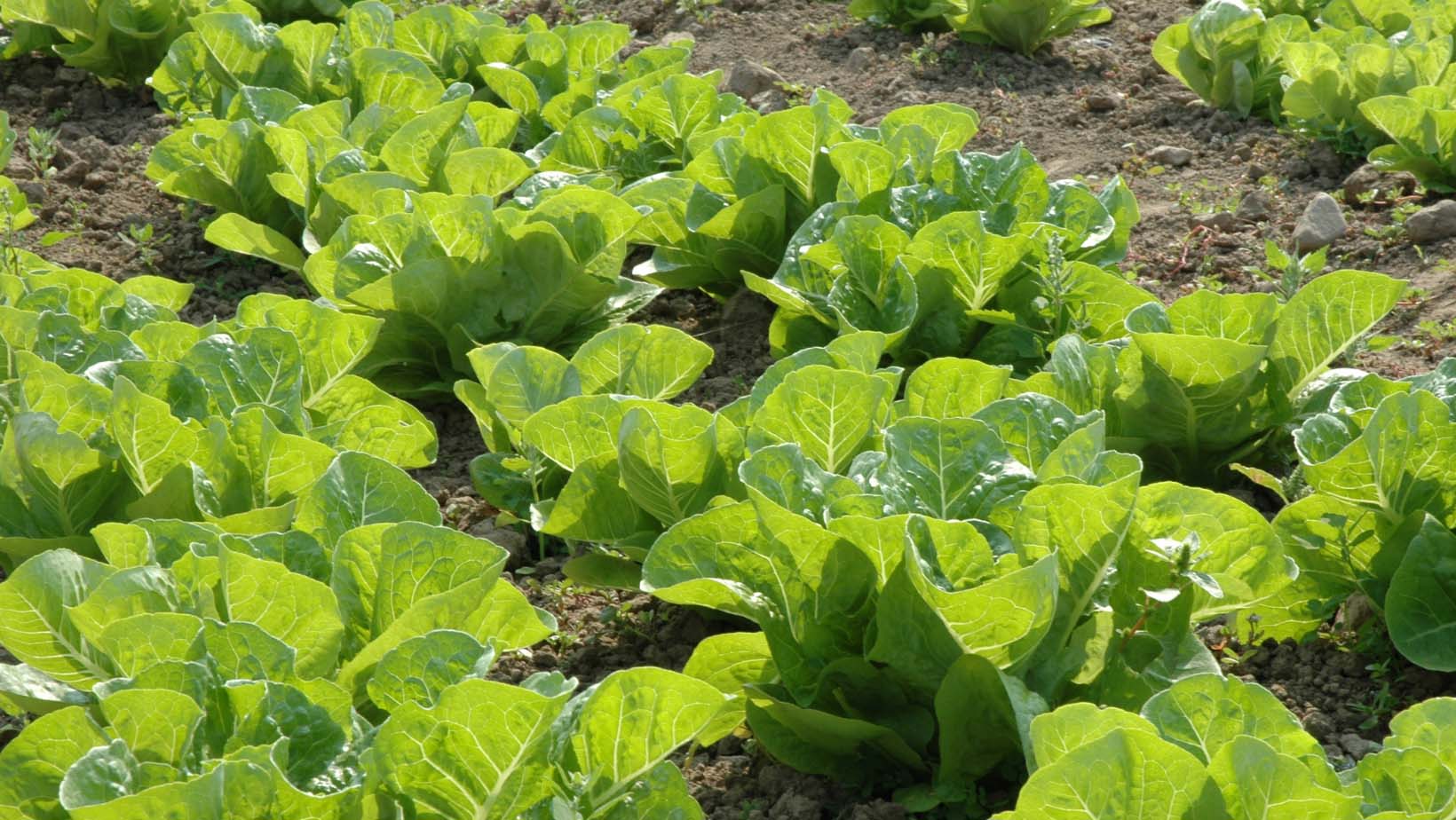How to Grow Lettuce: A Complete Guide for Home Gardeners
Growing lettuce at home is one of the easiest and most rewarding gardening projects you can undertake. Whether you have a large outdoor garden, a small backyard space, or even just a few containers on a balcony, lettuce is a versatile and fast-growing crop that offers a fresh, chemical-free supply of greens for salads, sandwiches, and more. In this article, we’ll walk you through the process of how to grow lettuce, from choosing the right variety to harvesting and troubleshooting common issues.
What is Lettuce Gardening?
Lettuce is a cool-season crop, meaning it thrives in cooler temperatures and can often be one of the first plants you sow in the spring or fall. The benefits of growing lettuce at home are immense: you get fresh, flavorful greens free from chemicals, and growing your own is more cost-effective than constantly buying store-bought lettuce. Plus, it’s a great way to get into gardening, as lettuce is relatively low-maintenance.
There are several types of lettuce, each offering a unique flavor and texture:
Romaine: Crisp and full-bodied, often used in Caesar salads.
Iceberg: Classic, crunchy lettuce, perfect for sandwiches.
Butterhead: Soft, buttery leaves with a mild flavor.
Loose-leaf: The easiest to grow, offering a continuous harvest.
Choosing the Right Lettuce Variety
Not all lettuce is created equal, and the variety you choose can affect both the flavor and the growing process. When selecting a variety, consider your local climate and growing conditions:
Romaine and Butterhead thrive in cool, moderate climates.
Loose-leaf varieties are more heat-tolerant and are great for continuous harvesting.
Iceberg tends to be the most finicky but offers the crispiest texture.
If you’re a beginner, starting with loose-leaf lettuce is a safe choice, as it’s easy to grow and can be harvested over several weeks.
Preparing the Soil
Lettuce prefers soil that is loose, well-drained, and rich in organic matter. A well-prepared soil ensures healthy, vibrant lettuce growth. Start by loosening the soil in your garden bed or container and mix in compost or well-rotted manure to increase fertility.
The ideal pH for lettuce is neutral to slightly acidic, between 6.0 and 7.0. You can test your soil with a simple pH test kit, which can be found at most gardening stores. If the pH is too low, add some lime; if it’s too high, sulfur can help lower it.
Planting Lettuce: Seeds or Seedlings
Now that your soil is ready, it’s time to plant. Lettuce can be grown either from seeds or seedlings, and each method has its benefits.
Planting seeds: Sow seeds directly into the soil about ¼ inch deep and space them around 6-12 inches apart, depending on the variety. Lettuce seeds are tiny, so scatter them lightly and thin out the weaker seedlings later.
Using seedlings: If starting indoors, sow seeds in seed trays 4-6 weeks before your last expected frost date. Once they have developed a few sets of leaves, harden off the seedlings by gradually exposing them to outdoor conditions before transplanting them into the garden.
For continuous harvesting, sow seeds every two weeks, ensuring a fresh supply throughout the growing season.
Watering and Mulching
Lettuce requires consistent moisture to grow well, as uneven watering can lead to bitter-tasting leaves. Water the plants regularly, keeping the soil moist but not soggy. Aim to water early in the morning to prevent the leaves from staying wet overnight, which can invite disease.
Applying a layer of mulch around your lettuce plants can help retain soil moisture and keep the roots cool. Organic mulches, such as straw or shredded leaves, work well and also add nutrients to the soil as they decompose.
Sunlight and Temperature Requirements
Lettuce grows best in cooler temperatures, ideally between 45°F and 75°F. In hot weather, lettuce is prone to bolting (going to seed), which makes the leaves bitter. To avoid this, plant lettuce in a spot that gets partial shade, especially during the hottest part of the day.
If you’re growing lettuce indoors, use grow lights to supplement sunlight. Lettuce requires about 6-8 hours of light per day to thrive.
Fertilizing and Nutrient Needs
Lettuce is a light feeder, meaning it doesn’t require heavy fertilization. However, providing it with the right nutrients ensures healthy, lush leaves. Before planting, incorporate a balanced organic fertilizer into the soil, such as a 10-10-10 mix.
Once the plants are established, you can give them a light feeding of liquid fertilizer or compost tea every few weeks. Be careful not to over-fertilize, as this can lead to rapid growth that attracts pests.
Managing Pests and Diseases
Like any crop, lettuce can be vulnerable to pests and diseases. The most common pests include aphids, slugs, and cutworms. To manage these pests:
Aphids: Spray with a mix of water and dish soap.
Slugs: Use slug traps or sprinkle diatomaceous earth around your plants.
Cutworms: Place collars around the base of young plants.
Lettuce can also be affected by diseases such as downy mildew and root rot. Prevent these by ensuring proper air circulation around the plants and avoiding overwatering.
Harvesting Lettuce
One of the joys of growing lettuce is that it’s ready to harvest fairly quickly. Loose-leaf varieties can be harvested in as little as 30 days. To harvest:
Loose-leaf varieties: Use the “cut-and-come-again” method by cutting outer leaves, leaving the inner ones to continue growing.
Head varieties: Wait until the heads are fully formed and firm to the touch before harvesting.
Harvest early in the morning when the leaves are crisp and full of moisture. Store harvested lettuce in the refrigerator, where it will stay fresh for up to a week.
Troubleshooting Common Issues
Even with the best care, problems can arise when growing lettuce. Here are some common issues and solutions:
Bolting: This happens when lettuce is exposed to hot weather or receives too much sun. The plant focuses on producing flowers instead of leaves. Prevent this by shading the plants and keeping them cool.
Bitter leaves: Caused by irregular watering or bolting. Keep the soil consistently moist and harvest leaves regularly.
Yellowing leaves: Often a sign of nitrogen deficiency. Apply a nitrogen-rich fertilizer, like compost tea, to boost growth.
Growing Lettuce in Containers
Don’t have a garden? No problem! Lettuce grows exceptionally well in containers. Choose a pot that is at least 6 inches deep and has good drainage. Fill it with a high-quality potting mix and sow seeds just as you would in the ground. Container-grown lettuce requires more frequent watering, as pots tend to dry out faster than garden beds.
Tips for Year-Round Lettuce Growing
Lettuce is a cool-weather crop, but with the right techniques, you can enjoy it year-round. To extend your growing season:
Use cold frames or greenhouses to protect lettuce during the colder months.
Grow lettuce indoors using containers and grow lights.
For continuous harvests, plant successively every two weeks.
Conclusion
Growing lettuce is a fun, rewarding, and cost-effective way to enjoy fresh greens year-round. By choosing the right variety, preparing the soil, and following proper watering and fertilizing techniques, you’ll have a bountiful harvest in no time. Whether you’re growing it in the garden or in containers, lettuce is a versatile crop that anyone can grow. So grab your seeds, get planting, and enjoy the crisp, fresh taste of homegrown lettuce.
By following these steps on how to grow lettuce, you’ll not only enhance your gardening skills but also have a continuous supply of fresh and nutritious greens.
FAQs on How to Grow Lettuce
What is the best time to plant lettuce?
Lettuce grows best in cooler weather, making early spring and fall the ideal times for planting. Most varieties thrive in temperatures between 45°F and 75°F. If you live in a warmer climate, you can plant lettuce in partial shade or use cold frames to extend the growing season into cooler months.
Can I grow lettuce indoors?
Yes! Lettuce can be grown indoors, especially in containers. Use a well-draining pot with good-quality potting soil, and make sure to provide at least 6-8 hours of light daily, either by placing the container near a sunny window or using grow lights.
How often should I water lettuce?
Lettuce requires consistent moisture to thrive. Water regularly, keeping the soil moist but not waterlogged. The best time to water is early in the morning to allow the leaves to dry throughout the day, preventing diseases.
What kind of soil does lettuce need?
Lettuce prefers loose, well-drained soil that is rich in organic matter. Adding compost or well-rotted manure to the soil improves its texture and provides essential nutrients. Aim for a neutral to slightly acidic soil pH between 6.0 and 7.0.
How long does lettuce take to grow?
The time it takes for lettuce to grow depends on the variety. Loose-leaf lettuce can be harvested as early as 30 days after planting, while head lettuce like Romaine and Iceberg can take 60-80 days to fully mature.
Can I grow lettuce in containers?
Absolutely! Lettuce grows well in containers, making it a great option for those with limited space. Use a container that is at least 6 inches deep with proper drainage. Keep the soil consistently moist and place the container in a sunny location or under grow lights.
Why is my lettuce bitter?
Bitter lettuce is usually a result of stress, such as irregular watering, high temperatures, or bolting (when the plant starts producing flowers). To prevent bitterness, water regularly and harvest the leaves before the plant bolts.
How do I prevent my lettuce from bolting?
Bolting occurs when lettuce is exposed to prolonged heat or stress, causing it to produce flowers and seeds. To prevent this, plant lettuce in cooler weather, provide partial shade during hot days, and keep the soil consistently moist.
What pests and diseases affect lettuce?
Common pests that attack lettuce include aphids, slugs, and cutworms. Natural pest control methods, such as using insecticidal soap or setting up slug traps, can help manage them. Lettuce is also prone to diseases like downy mildew and root rot, which can be avoided by proper watering and air circulation.
How do I harvest lettuce?
For loose-leaf lettuce, you can use the “cut-and-come-again” method, where you cut the outer leaves while allowing the inner leaves to continue growing. Head lettuce should be harvested once the heads are fully formed and firm. It’s best to harvest lettuce in the morning for optimal freshness.
Can I grow lettuce year-round?
Yes, with the right techniques! Use cold frames, greenhouses, or grow lettuce indoors under grow lights to extend the growing season. For continuous harvests, plant new seeds every two weeks throughout the growing season.
What is the easiest lettuce variety to grow?
Loose-leaf varieties are typically the easiest to grow, as they mature quickly and can be harvested multiple times. They are also more tolerant of different growing conditions compared to head lettuce like Iceberg or Romaine.
How do I improve the quality of my lettuce leaves?
Consistent watering, nutrient-rich soil, and adequate sunlight will lead to healthy, crisp leaves. Mulching around your plants will help retain moisture and regulate soil temperature, resulting in better-quality lettuce.


0 Comments